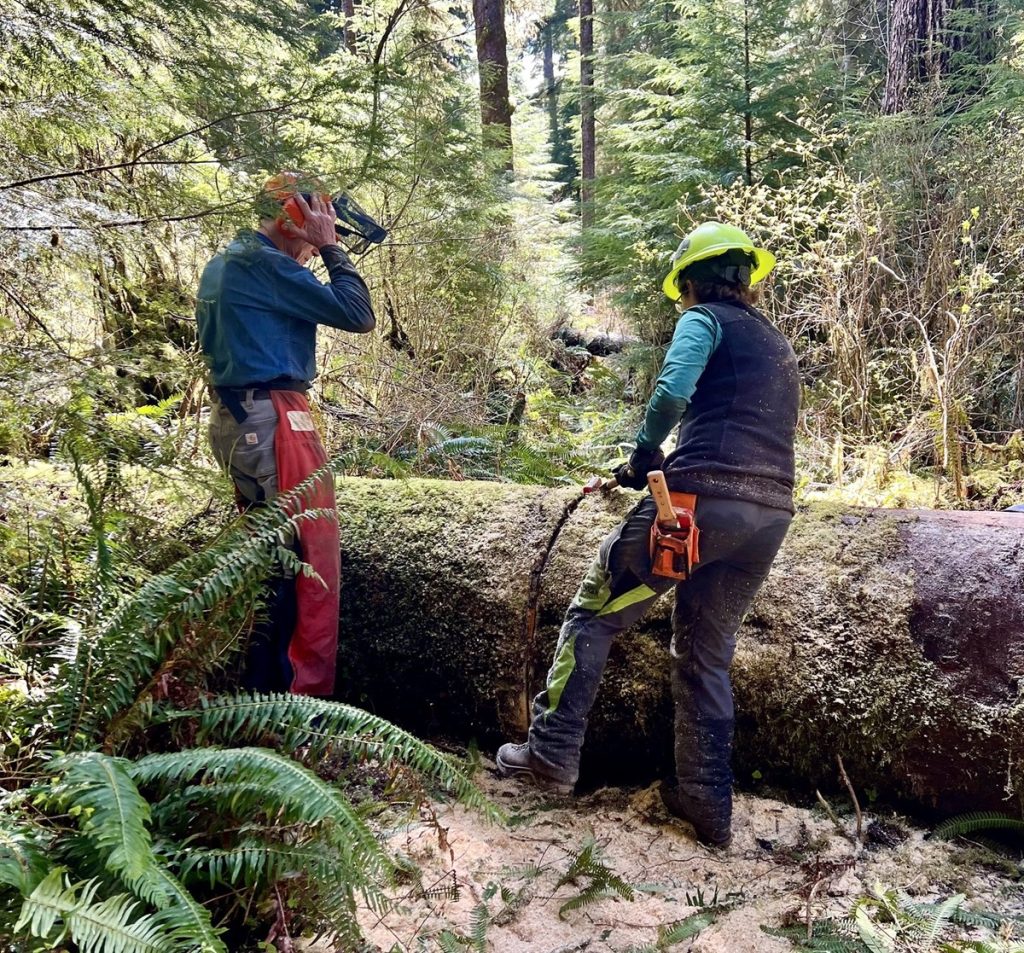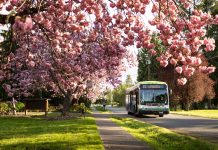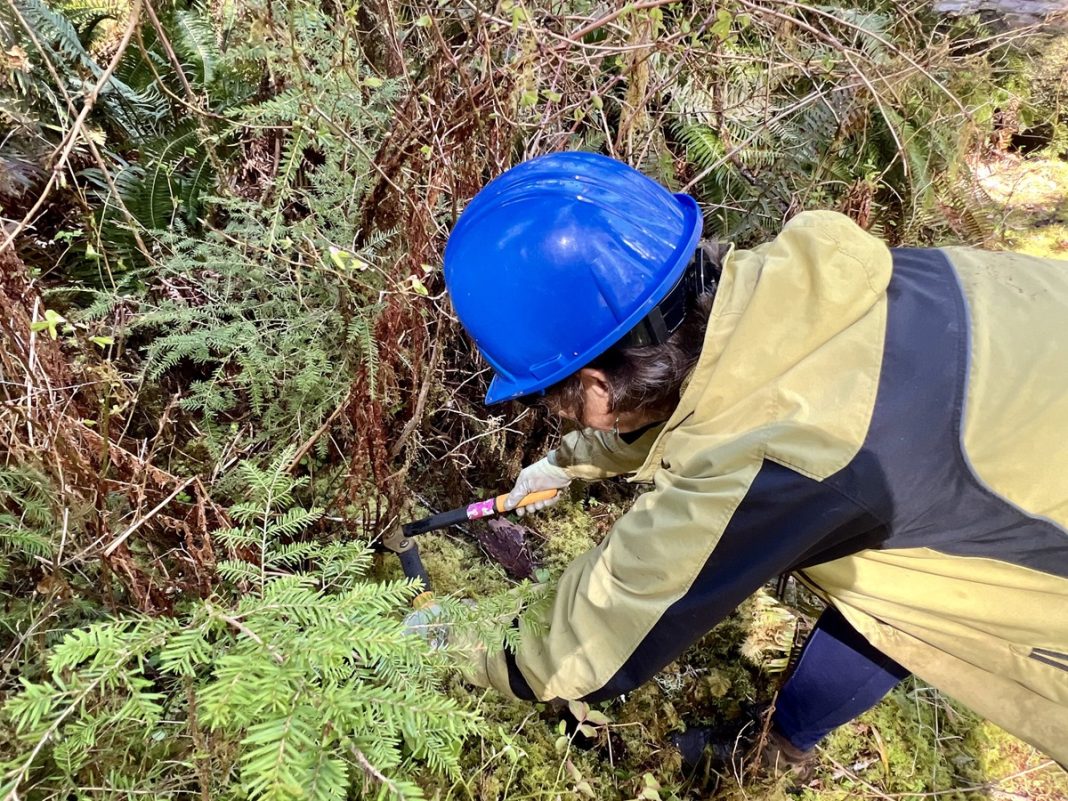One of the reasons so many of us put up with Pacific Northwest’s less-than-perfect weather most of the year is because of our absolutely gorgeous national forests that are easily accessible throughout Thurston County. The Olympic National Forest is just a short drive from Olympia, and is a prime spot for hikers, bikers, horseback riders and campers to get back to nature. What some of us don’t think about is the amount of work it takes to keep the forest preserved for the animals and plants that call it home, as well as all of us that enjoy using it for recreation. That work would not be possible without the help of hundreds of volunteers.
“We work with 7 different organizations to maintain the forest’s trails and in 2023 alone they put in over 10,000 hours of service!” shares Joshua Parker, partnership coordinator for the Olympic National Forest. “For every volunteer working on the forest frees up a Forest Service employee to do other critical or necessary work elsewhere.”
Olympic National Forest Volunteers Do Critical Work
The Olympic National Forest utilizes its partner organizations to have volunteers come out and work on projects throughout the year. “Essentially it comes down to capacity for work,” Parker explains. “We can get more done if we have dedicated partners and volunteers helping.”
Many of the partner organizations help to maintain over 250 miles of hiking trails in the Olympic National Forest. “What’s essential about the role these organizations play in the Olympic is that we don’t currently staff a Forest Service trail crew, so we are totally dependent on our committed volunteers to keep our recreation opportunities accessible to the public,” explains Parker. “Given the climate we have on the peninsula, there’s never a shortage of trail work out there!”
Since the mission of the USDA Forest Service organization is to sustain the health, diversity and productivity of forests and grasslands throughout the United States, these volunteer work parties are directly helping them fulfill their mission. Wildfires, drought and invasive species are just a few of the things they have to combat. Human use of the parks can pay a toll on them as well, and often it’s volunteers fixing trails or cleaning up campsites. To address these types of challenges, Parker explains that the National Forest Service uses the shared stewardship concept. “Tribal governments, states, and other partners, which many are volunteer organizations, work together to address these challenges and explore opportunities to improve forest health and resiliency,” he explains.

Volunteering for the Olympia National Forest
Wondering how you can volunteer with the Olympia National Forest? The easiest way may be to join one of the many partner organizations that already have an established relationship with the Olympic National Forest, and has planned work parties. You can find a list of these groups on the Forest Service website. They include the Washington Trails Association, The Gray Wolves Trail Crew, Mount Rose Trail Crew, Pacific Northwest Trail Association, Olympia Mountaineers and Back Country Horsemen of Washington.
“Joining one of our partner organizations for a trail work party is a great way to dip your toe into volunteering in the Olympic,” shares Parker. “You also get the added benefits of support and camaraderie from your fellow volunteers. If you join an organization, most of the administrative work will be done by the organization themselves. For many people, the social aspect of volunteering is just as important as the work they accomplish.”

If you are looking to volunteer in a specific way, or you have a technical skill that you think could help the National Forest Service, you can apply to volunteer directly with them. A work plan will then be created between you and the USDA Forest Service team. “This is a great avenue for people wanting to partner in very specific interests or fields of work on the forest and are interested in a longer-term commitment,” explains Parker. To do this, fill out the volunteer form and submit it to Parker via email Joshua.Parker3@usda.gov.
You can also look for volunteer opportunities on Volunteer.gov. If there are any open Forest Service opportunities, they will be listed there.
If you are a group that would like to become a USDA Forest Service partner for service projects, they are always accepting more Parker says. “A couple areas we are looking to expand is in conservation education and interpretation,” he adds. “We think finding the right partner to help mobilize a team of volunteers to lead school programming, campfire talks, guided walks – the sky is the limit! – would be an incredible addition to the way we serve the public.”
And while giving back to our beautiful trails is its own reward, the USDA Forest Service gives out awards each year to thank those who give their free time to help keep our forest thriving. “Recognition of the hard work our partners and volunteers do is critical, and something that we are trying to do more and more of,” explains Parker. “The National Volunteer Awards are one way of saying thank you, we see you, and your work is essential to what we’re all working towards here in the forest. We also award passes and permits and are actively thinking about more creative ways to amplify all the work being done by volunteers across our forest.”
In 2024, two volunteers with the Olympic National Forest were nominated for regional awards. Larry Baysinger, who has been volunteering since the 1980s, and Rebecca Wanagel, who leads the Gray Wolf Trail crew.
We all use our national forests. Why not take a little time to give back to keep these beautiful spaces that surround us with greenery, fresh air and wildlife so that future generations can continue to enjoy them too?




















































